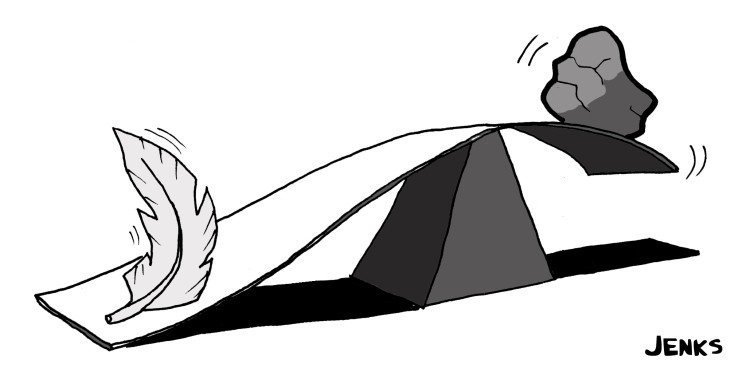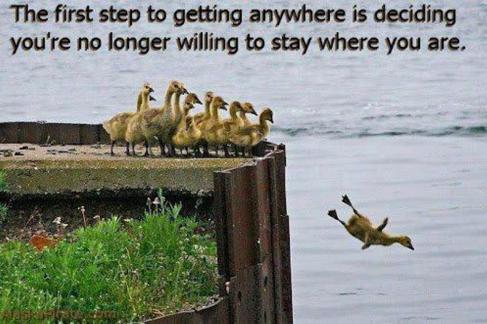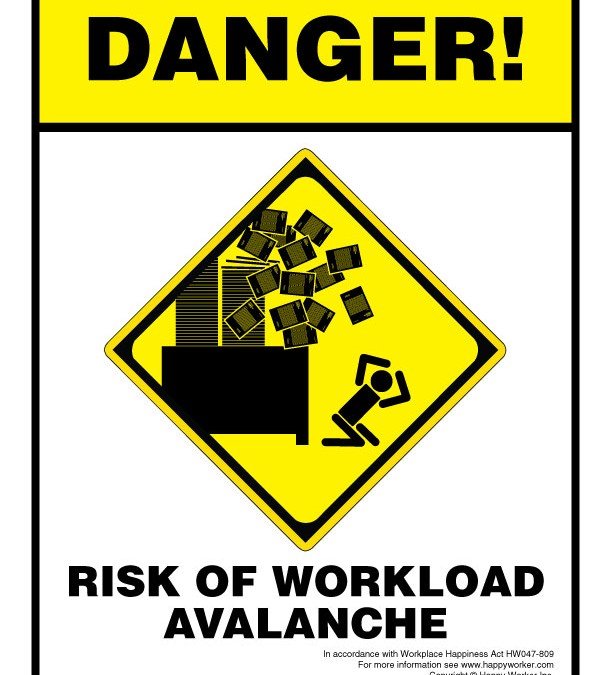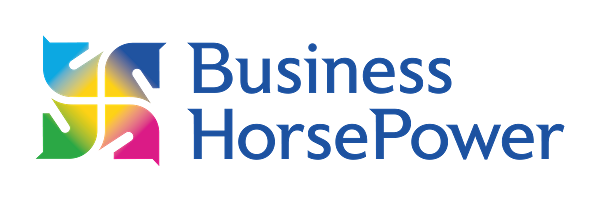
by Julia Felton | May 14, 2014
 Running your own business involves a millions of details and moving parts. And if you’re relying on yourself to remember all of these, you WILL get burned out. Things WILL fall through the cracks and ultimately you will lose the trust of your customers. Not a great place to end up in an environment where prospects and customers are seeking you to be their trusted advisor.
Running your own business involves a millions of details and moving parts. And if you’re relying on yourself to remember all of these, you WILL get burned out. Things WILL fall through the cracks and ultimately you will lose the trust of your customers. Not a great place to end up in an environment where prospects and customers are seeking you to be their trusted advisor.
This is why the creation of systems is vital for you if you are to create a Joined Up Business so you can become focused and productivity by saving yourself resources. You see systems are the lifeblood of your business – they are an integral part of the business DNA and yet many business take an ostrich approach to systems – preferring to stick their head in the sand rather than take action and get some simple systems set up,
A system is simply a series of steps for a particular task or project. The cool part? You shouldn’t be the one executing the system. Once you have systems documented, you can hand them off to key team members – this is how you begin to create a business that runs without you.
If you’ve never systematized anything in your business before, take heart – if you take the same steps to achieve particular tasks in your business more than once, you already have the makings of a system for that task.
The key is to hone, refine and ultimately delegate the RIGHT systems that are going to grow your business.
Which systems should you implement FIRST? Below are my top 7 systems that I use daily to run my business.
1. A system to attract new clients.
Your business growth depends on your ability to attract new, highly qualified, highly awesome ideal peeps into your world, month in and month out. (The easiest way to get started? A signature system, a signature talk, and local speaking gigs. Simple, streamlined and proven.)
2. A system to turn prospects into invested clients.
What happens when a potential new client contacts you or your team out of the blue? When you invest time, energy and attention to attract new clients, it only makes sense to have a system that kicks in to turn these prospects into invested new clients.
3. A system to follow up with prospects (after events, networking, or in-person meetings).
Nothing closes the “know-like-trust” gap faster than face-to-face connection, which means that every event you attend can mean thousands of dollars in business for you – if you follow up. Next time you find a stack of business cards in your purse, ask yourself, “How can I systematize follow-up within 48 hours of the event?”
4. A system for “keep in touch” (such as a newsletter).
There is no way that you can expect to fill your programs easily if you’re not doing SOME kind of outreach or follow-up. Whether it’s a newsletter, a video newsletter, an evergreen autoresponder, or a blog (used in conjunction with email), you’ve got to do something and do it consistently. Which means… you need a system. 🙂
5. A system to serve clients in your programs.
When a new client signs up, there’s excitement… and terror. She’s thinking a zillion things, not the least of which is, “Did I really make the right move, invetsing £5000 to this person?” Every program you offer needs to have a system behind it to give your clients a stellar experience: welcoming new clients, scheduling the calls, delivering the calls, recording calls, distributing the calls, communicating with your herd and whatever else you do to deliver the goods. Your clients DO notice these details, which, when done well, leads to better results and repeat business.
6. A system to manage your cash.
Your cash flow system should include “buckets” for incoming money (X for taxes, Y for expenses, Z for your salary, and so on). And always pay yourself, even if it’s just one dollar – the action matters more than the amount when you’re just getting started.
7. A system to generate referrals & testimonials.
The best clients come from your awesome current clients. Awesome current clients love to refer, so make it easy on them. (Which makes your business growth easy on you – win!)
The small amount of time you’ll invest in setting up your systems will pay you back exponentially in time and income over the long run, PLUS give all of your clients and potential clients the kind of high-value experience that truly sets you apart.
You can learn more about the 21 Ways I see most business owners losing cash and clients because they don’t have simple systems and processes in place by going to www.businesshorsepower.com and downing my free report

by Julia Felton | May 6, 2014
“There is nothing quite so useless, as doing with great efficiency, something that should not be done at all.” – Peter Drucker
The Pareto Principle – also known as the 80:20 rule – is applicable to any business and let time and time again I witness business owners failing to understand this and so wasting valuable time, energy and money on activities that are not adding to helping the business meet it’s goals. As my regular herd members know I am all about creating businesses that are more efficient and what I called Joined Up.
So what is the Pareto Principle? It holds that 80% of the consequences of any action come from 20% of the causes. This principle can actually be applied to everything you do. It is a powerful, fundamental principle of life – and of working smart.
The original 80:20 observation was as a result of Italian economist Pareto noticing in 1906 that 80% of Italy’s land was owned by 20% of the population. He then carried out surveys on a variety of other countries and found to his surprise that a similar distribution applied. He and others later discovered that this principle is proven in many other areas of interest:
- 80% of results come from 20% of effort;
- 20% of your customers will account for 80% of your profit.
Apply the 80:20 rule to the information you receive: 20% is useful, whereas 80% is not. The key is to identify and focus on that 20% and ignore or remove the rest completely.
The same is true of time expended for results achieved. Think of the benefits of applying the Pareto Principle to your time management and personal and business productivity!
Which one of these statements rings true for your business?
- 80% of your business comes from 20% of your customers
- 20% of your product or service range contributes 80% of your profit
- 80% of customer complaints originate from 20% of the causes.
- 20% of your individual effort and time achieves 80% of the desired results
- 80% of your business productivity loss results from 20% of the causes
- 20% of your staff is responsible for 80% of the business outputs and results
- 80% of the value in the business is generated by 20% of the processes
The common approach to business is to squeeze every last drop out of each opportunity, to go ‘100% all-out’, without consideration of the impact on time, productivity and wastage. Simple, time-efficient businesses recognise that it is fundamentally inefficient to go for the ‘whole pie’ when you can get the majority of results for the minority of effort.
With knowledge of the 80:20 principle, you can concentrate on what wins you customers and success. Look at your business and concentrate on the 20% that produces the 80% of benefit. Spend 80% of your time doing the 20% that really gets you results. ‘You win some, you lose some’ is no way to run a successful business, but armed with knowledge of the Pareto Principle, you can work the system to your benefit.
It’s not just about working smarter – it’s about working smarter on the right things that will get you the best results. Think really boldly about this law – how far, and in how many ways you can apply it. The more incredible the results can be.
- Why spend 100% of your money and time on ‘growth at all costs’ when you could downsize, freeing up capital and time? Spend just 20% in developing the most profitable 80% of your current business, and invest the rest in other ventures?
- Why work full time, when you can work only 20% of the time on the things that get you 80% of your profits? And spend the rest of the time sipping a cold beer on the beach, watching the sun go down or if you are like me hanging out with my horses!
This year I am actively reviewing my business to see which activities I need to focus on most and which I can let slip by as the benefits of doing them are not worth the time and energy invested.
I encourage you to cast a critical eye over your business and examine what you need to do more of and what you need to stop doing. I’d love to hear what you discover about your business
How can you use this rule to revolutionise your business and your life? Take it to the limit!

by Julia Felton | Apr 28, 2014
 The person on the phone wants to go over the contract she sent you. This is THE call you’ve been waiting for! However, looking at your cluttered desk and the bags full of paperwork waiting to be filed, you have no idea where the document might be.
The person on the phone wants to go over the contract she sent you. This is THE call you’ve been waiting for! However, looking at your cluttered desk and the bags full of paperwork waiting to be filed, you have no idea where the document might be.
You bluff your way out of the conversation (“Can I call you right back? I was on the other line when you called.”) and spend 30 minutes hunting for the paper. When you finally find it, you notice the stickie reminding you of action you were to have taken on the document last week. Yikes.
Now, where is her phone number? It’s on the back of this envelope, right? Maybe it was on the back of today’s lunch receipt…
Pretty scary! The wasted time and energy. The harsh self-criticism. The stress and embarrassment. The lost opportunities.
This office nightmare comes to life countless times every day by people who miss or ignore the direct connection between organization and success. It’s not just that organization allows you to move more easily around the office. Organizing your office and work life helps you fulfill your own potential and that of your company.
“Organizing is the process by which we create environments that enable us to live, work and relax exactly as we want to,” writes Julie Morgenstern, in her book, Organizing from the Inside Out. “When we are organized, our homes, offices and schedules reflect and encourage who we are, what we want and where we are going.”
For most people, the three biggest obstacles to an organized office and work life are: clutter (paper and email), planning and follow-through, the latter two being more an issue of time management. And while a disorganized office can be much like a disorganized schedule—overly packed, haphazard, limited in space or hours—it makes sense to organize space and paper first. Below are some tips for tackling office clutter.
If you’re starting from scratch—organizing the entire office and creating a new system—Morgenstern advises to first analyze the situation, taking an overall look at space, furnishings, equipment, supplies and types of paperwork. Ask yourself five questions:
1. What’s working? It’s helpful to know what’s not “broken” so that you don’t spend time fixing it. Also, a little “good news” is nice to hear.
2. What’s not working? Take a big picture approach here. It takes forever to get things done, because I can’t easily find what I need, so I work a lot of overtime.
3. What items are most essential to you? What do you need to have at hand? What papers represent the crux of your business?
4. Why do you want to get organized? These are the benefits you will derive from an organized office/desk. Less anxiety, more energy for work, more room for work.
5. What’s causing the problems? Some of the most common sources of office clutter: inconvenient or insufficient storage, no designated “home” for things, perception of not enough time to get or stay organized.
The next step is to strategize how to approach the things that are not working and their underlying problems. There are dozens of organization methods and systems; one might be just right for you, or you may be best served by mixing and matching ideas. In addition to Morgenstern’s, here are some books to consult for ideas:
The Well-Ordered Office: How to Create an Efficient and Serene Workspace, by Kathleen Kendall-Tacket
Organize Your Office! Simple Routines for Managing Your Workspace, by Ronni Eisenberg
The Office Clutter Cure: How to Get Out from Under It All, by Don Aslett
Organizing Your Work Space: A Guide to Personal Productivity, by Odette Pollar
File…Don’t Pile: A Proven Filing System for Personal and Professional Use, by Pat Dorff
Taming the Paper Tiger at Work, by Barbara Hemphill
For many, the biggest problem lies in maintaining an organization system. Stephanie Winston, author of Organized for Success, studied the habits of a cross-section of high-level executives across the United States, and recommends a relentless, laser-focused approach to processing paperwork—and even electronic communication—so that it doesn’t build up:
• Toss it. (Delete, if electronic.)
• Refer it. (Forward.)
• Act on it personally.
• File it. (Archive.)
To arrive at any kind of a sustaining system, Morgenstern writes, it’s important to understand and work with or around psychological obstacles to a clutter-free environment. These may include:
- Unclear goals and priorities. Organizing is about defining what’s important and setting up a system to reflect that.
- Fear of success/fear of failure. Disorganization may be a convenient way to hold back.
- Need to retreat. Clutter can be a protective shield to keep others at a safe distance.
- Fear of losing creativity. A common myth is that creative, “right-brained” people need to work in chaos to produce high-quality work. Balderdash!
- Need for distraction. Clutter can provide a convenient excuse to avoid uncomfortable issues or unwanted tasks.
- Need for perfection. Often, people won’t deal with clutter until it can be done perfectly. Translation: It will never get done.
Identifying these obstacles to an organized office and work life can go a long way toward creating an effective, lasting solution to clutter and disorganization. Along the way, you might just find yourself fulfilling your potential, too!

by Julia Felton | Feb 2, 2014
I’m often asked how I made such big leaps in my business in such a short amount of time.
One of the things that has made such a big difference over the last three years is surrounding myself with amazing, high caliber, professional women and investing with mastery level coaches. So every now and then I thought I’d point you in the direction of worthwhile free resources from some of those women who are rockin’ it with their unique specialty.
May you find the connection to the perfect resource you’ve been hoping for!
*****************************************************
Awesome FREE Resources from Mastery Level Coaches
*****************************************************
Just click on the resource title in red and you will immediately be taken to the download page for that resource.
[content_box_red width=”75%”]Speaking to groups is one of the quickest ways to get known,
build your list and get high-end clients. Check out Dinah Snow’s
free Speaking Kit: How to Attract Clients and Build Your
Tribe – Step by Step –by Speaking for Free 2.0
[/content_box_red]
[content_box_green width=”75%”]If you are a corporate leader or designated professional,
Nafissa Shireen invites you to explore your hidden beliefs
about money that may be affecting your leadership skills.
Learn the 5 steps you can take to Master Your Money
and Career.[/content_box_green]
[content_box_blue width=”75%”]Coaches, health professionals, and those wanting to shed
weight need these toolkit basics from Janis Pullen: Weight
Loss Maintenance Assessment Report, 15 permanent
weight loss tips, done-for-you tracking sheets, risk report,
Ontological Wealth, Weight, and Leadership Success Tips
“Weight Loss 101” Package:
[/content_box_blue]
[content_box_yellow width=”75%”]Your Mindset is the Key to Your Success. Check out
Meriflor Toneatto’s 7 Secrets to a Wealthy Mindset
audio which includes high value and high content
information to help you shift your mindset into financial
freedom in your business and life.
[/content_box_yellow]
[content_box_light_blue width=”75%”]Boost Your Attraction Power: Master 12 Love And Money Alchemy Principles and Thrive! Acknowledge the
Alchemy that exists between Love and Money in order to
create a positive relationship with money and attract a
consistent flow of abundance! Download Marcelle della Faille’s
free checklist.[/content_box_light_blue]
and then of course there is a new free resource that I have specially created for you:
[order_box_2 width=”60%” + border=”4px”]Entrepreneurial ADD: The Hidden Illness That’s Costing You Cash and Clients. In my revealing new report you will discover how you know if you have it, how it impacts your business and the one thing you can do right now to cure this condition.
[/order_box_2]
I hope you love these resources!.

by Julia Felton | Jan 14, 2014
Staying FOCUSED is one of the BIGGEST obstacles that you can have in business (and I should know as I struggle with this too). How do you decide what to focus on first? How do you organize your day? How do you say “no” to people who need you but aren’t your ideal clients or who you secretly feel you’ve outgrown? Which business strategies are most important to master? How do you keep distractions to a minimum yet still feed your need for community and sharing?
Wow, there is a lot to juggle and when we are not sure what to do procrastination creeps in. As a business owner, especially those of us working from home, somehow all the house chores or social media seem more important than making that sales call (which secretly you probably dread). The only problem with this is that your business won’t flourish without clients and in fact you won’t have a business but rather an expensive hobby. And trust me that’s an expensive place to be, I’ve been there.
For a long time I thought I was working really hard. Well I was working hard but I was working on all the wrong things, activities that didn’t help me grow my business. You see all successful business owners understand the importance and value of using your time effectively. They focus on just high impact producing activities in their business. Activities that bring in cash and clients. They don’t waste their time on activities that don’t grow their business.
So what’s the solution. It is having a structure and system for all your activities in your business and this includes having a structure to your day. You see the secret is really quite simple: Systems Liberate You. I used to fight this idea. Structure and systems are what had ruled my life in the corporate world they had kept me on that hamster wheel of getting up at 6:00am, on the train at 7:10am; at my desk by 8:30am, meetings all day, starting work at 5:30pm, leaving the office at 8:30pm; home at 10:00pm. So when I set up my own business I rebelled and avoided having any structure in my business. I loved the freedom and flexibility but it meant that I had no FOCUS, I let the pendulum swing too far the other way and so had an expensive hobby and not a business. The result was that I was working really hard and not getting anywhere.
Then I had that light bulb moment – the epiphany that changed everything. I realised that some structure was good and in fact secretly, if I was honest, I missed it a bit. I started creating templates and processes for everything in my business, including a structure for my day. Freedom, focus and business growth were the results. And without all of the chaos and drama. I was finally back in control of my business and I was running my business rather than my business running me.
Take this short quiz to determine if you have entrepreneurial ADD:
- You have post it notes all over the place
- Your desk is a mess
- You have an overflowing email box
- You have a backlog of filing
- You have more than 3 incomplete projects
- Everyday you wonder where the time went
- You use social media as a distraction
- You let the priorities of others influence what you do
If you answered YES to more than four of these questions, then it’s a sure sign you have entrepreneurial ADD and need help focusing in your business. If this is you send me an email at connect@businesshorsepower.com with I’VE GOT ENTREPRENEURIAL ADD in the subject line and I’ll schedule a time for us to chat about how I can help you.

by Julia Felton | Nov 8, 2013
I don’t know about you but recently I have been feeling the pressure of an increased workload. It’s probably something to do with the fact that I have been out of the office so much lately (two trips to the US within 5 weeks)!. When things pile up you can start to feel overwhelmed and stressed. The challenge is that this just compounds the problem, so here are my top tips on how I am coping with all the extra work. I hope they help you.
- Let go of perfection. It could not serve you less at this time. Good enough is good.
- Identify time-wasters. Once you’re clear what they are, start reducing them.
- Plan everything. It will help keep you sane, centered and on track.
- Keep a list. When work piles up, commitments can slip through the cracks. Write down everything you have to do and check them off as you complete them.
- Establish priorities. Start with the highest priority items on your list. Distinguish between important and urgent priorities.
- Outsource or delegate everywhere possible. There are limits to how much you can do and still deliver value to clients, customers or your organization.
- Negotiate with your boss or clients. Don’t just accept without question an impossible situation.
- Minimize distractions. Check email only twice a day. Use earphones. Close your door.
- Exercise. Working out charges up your energy reserves and helps you sleep better at night.
- Breathe deeply. Even a few deep breaths at your desk will calm you.
Learning to say No to things is a great way to put you back in control of your schedule, during this time or any other. Also it is imperative to be clear on your priorities, because they might not be what you think they are. The way I like to prioritise is to allocate all my tasks into four different quadrants that are as follow:

Urgent and Important
Urgent but Not Important
Important But Urgent
Not Urgent and Not Important
It always amazes me when I do this that I find everything urgent and important. If that is the case for you take a step back and really think about what is happening in your business right now. What tasks can you delegate? What activities can you ditch as they are no longer relevant? What do you really need to do now. You can then focus on these activities and park everything else. You will feel liberated once you have stuff prioritised and know the way forward.
So if you are struggling with busyness in your business then connect with me so that we can schedule in a complimentary strategy session where we can identify the key areas where you are wasting your time, energy and resources and the next simple step you can take to move things forward.
by Julia Felton | Oct 23, 2013
It’s no surprise that step five of the CANTER model to create a Joined Up Business is Execute The Plan and follow up is an integral part of this. It does not matter whether you’re learning to swing a golf club, baseball bat or tennis racquet, coaches always emphasize the importance of follow-through. It’s not just hitting the ball that matters, it’s how you continue your swing once contact is made.
The same thing applies in job interviews, networking, sales and almost any work situation: without purposeful follow-through on your actions and interactions with others, you won’t really be able to reach your professional potential.
“Failure to meet deadlines, honour commitments, monitor staff, return calls and keep track of long-term projects is the most underrated cause of chaos and failure in business life,” writes Stephanie Winston in Organized for Success.
So often we feel we’ve completed a task because the action of it is “done,” but we under-emphasize how powerful it is to continue developing, tracking and monitoring operations and relationships even after they’ve been set in place. As Larry Bossidy and Ram Charan note in Execution: The Discipline of Getting Things Done, “Follow-through is the cornerstone of execution, and every leader who’s good at executing follows through religiously. Following through ensures that people are doing the things they committed to do, according to the agreed timetable.”
It’s Not Just What, But How
When we think of follow-through, we tend to think of taking action. But a large part of follow-through is about first figuring out how things will be done. Once you define your goals, set aside some time to decide just how you will reach them. What steps will be needed to accomplish them? Who will do which steps and when? What is the desired time-line? If a strategy does not address the hows, it is almost certainly doomed to failure.
Take meetings, for instance. A plan for follow-through should be detailed at the end of every meeting. “Never finish a meeting without clarifying what the follow through will be, who will do it, what resources they will use, and how and when the next review will take place and with whom,” Bossidy and Charan suggest.
Organizing and Delegating
A good organizational system will support follow-through more than almost anything. If you are among the organizationally challenged, do one of two things:
1. Make a vow, buy an organization book or two, reserve a weekend or a week, and just do it. Get organized once and for all. You’re not likely to follow through well, if at all, when the disorganization gremlin has hold of you. Getting organized is one of the biggest keys to success; not doing so is an extremely common and most unfortunate form of self-sabotage.
2. Hire someone to organize you and keep you that way. The investment will pay for itself when you begin following through more consistently.
Delegating should also be part of an organizational system. “Getting things done through others is a fundamental leadership skill,” according to Bossidy and Charan. “Indeed, if you can’t do it, you’re not leading.” Delegating is an efficient way to ensure that the greatest number of tasks, including follow-up tasks, get done in the shortest amount of time. In other words, if you want to be successful, don’t be afraid to dole out the workload to others. The key is to always think in terms of the big picture instead of focusing only on whatever task is in front of your face at the moment.
Pro-activity and Integrity
Following through means taking action and keeping your word. Below are some additional considerations regarding follow-through.
• When you say you’ll do something, be scrupulous in meeting your commitment, whether to a client, supervisor, customer or direct-report. If you can’t deliver it, don’t promise it.
• In job interviews and networking, rapid follow-up can mean the difference between landing the job and/or client. Hiring decisions are often made very quickly after interviews. And getting in contact with people soon after meeting them means they will remember you, increasing the likelihood they will eventually buy from you.
• Be sure to send a thank you note after you close a sale or receive any courtesy. This will make you stand out from the others, inviting an ongoing relationship to develop, or continue to develop. Also, a short thank-you note gives you a great excuse to add anything you forgot to say in a meeting or interview, or to highlight details you only glossed over.
• All top salespeople are masters at follow-through. Lack of follow-through is the primary element missing when sales are not keeping pace with leads generated. You may have hundreds of leads with a great deal of potential. But unless you follow through and actively market/sell to these leads, they will not turn into sales.
• Following through after sales have been made also makes good financial sense. Getting business from new customers costs significantly more than securing additional business from existing customers.
When it comes to follow-through, something is better than nothing. It doesn’t have to be an all-or-nothing thing. The best is to follow-up as frequently and best as you can, a practice that can even affect productivity positively.
“On a day-to-day basis, consistent, automatic follow-through can deflect a lot of the firefighting that can push your day off course,” Winston writes
I’d love to hear where you are failing to follow through in your business and the impact that this is having on your success. Recently I estimated that my lack of follow through was leaving c£30,000 on the table each year. Ouch!!! Now maybe that will prompt me into action.

by Julia Felton | Sep 11, 2013
Resource Effectively is the 6th step of CANTER which is my proven system for creating a Joined Up business. To me resourcing effectively means two things – working with the right team members and having in place proven systems that save yourself time time, energy and money.
Most of us run our lives on a handful of systems. Between our cellphones, our planners and our e-mail inboxes, we have organized ourselves and our time. And if you ever doubt the importance of these systems, recall your panic the last time you lost your planner.
Yet as important as these systems are, most of us don’t take advantage of what systems can do to improve our businesses. Systems are simply ways of automating or structuring processes so that they can occur systematically without so much thought or attention—and by more than just one person, so that the business can continue to run if the owner takes a vacation.
Figuring Out What to Systematize
For most of us, there are dozens of similar repetitive tasks, large and small, in our businesses or jobs that could be systematized. To identify where you can apply systems, step back from your enterprise and try to look at it objectively. Ask yourself questions such as below:
Where are your frustrations? This is an important test for two reasons. First, you are more likely to be frustrated if you are redoing tasks that bring no particular satisfaction. Second, you are going to be frustrated if you have to relearn a task or “recreate the wheel” every time a specific need comes up.
What is holding back your business? What are the choke points? Do you need to generate more prospects? Do you have prospects but a low rate of conversion? Do you convert customers but lose them through poor follow-through? Strategically focusing on your business this way is more likely to spot high-value opportunities for systemization.
What causes you stress? Is it preparing for the quarterly performance reviews? Finalizing your printed catalog? Preparing for your annual make-or-break tradeshow? Even if you know the steps by heart, systematizing at least part of these stress-inducing activities could yield big benefits to your business—and your well-being.
Start by Writing It Down
The first step in systematizing a process is to write it down. What exactly is the process you go through to handle a sales lead? Place a want ad for your shipping clerk? Train a new receptionist? If you are struggling to get all the steps down, try the “backwards” approach. Start with the end result and then determine what you did right before that, and so on, for each step.
Another valuable exercise is to document what everyone in your organization does. Forget job descriptions: You want to know what they actually do. This may highlight high-value opportunities to build systems that can be leveraged throughout the organization.
Often, the documentation you create in this process is all the system you require. The next time the task comes up, you can pull out the file and save the relearning. It also becomes the core of the training manual for new employees, which is often one of the most valuable systems you can build.
Do the Cost-Benefit Math
Here are some guidelines for figuring out which of the myriad choices are worth the effort of creating a system:
What are the odds you will be doing this again? How often?
How hard is it to automate? Creating paper checklists is easy; programming Outlook to sync your phone contacts and automatically generate follow up emails isn’t so easy. However, don’t give up if the software approach is too expensive or complicated. Productivity guru David Allen sells several slick software products, but his core recommendation for organizing tasks is to create a set of clearly labeled file folders. Again, a well-documented, step-by-step manual is the core of many highly successful systems.
How painful is the task? And how painful is failing to execute it well? High-value tasks, such as annual trade-shows and the like, are good candidates for setting up systems in order to reduce risks and the associated stress.
Can you hire it out? In some cases, the best system is to hand the documentation for the process to a junior employee. In particular, those stress-inducing tasks noted above can be partially off-loaded. But you will need to do the work up front of carefully recording the steps involved, and how to achieve and measure the necessary outcomes.
Get Out of the Box
As you go through this analysis, don’t be afraid to start with the question: Why do we do this process in the first place? For every process you find that could be automated with a new system, you may find another that can be eliminated altogether. Systematically reviewing your business this way may be the most valuable system of all.
Systems dramatically increase your productivity and if you want to improve your productivity and achieve more in the last 90 days of this year than you have in the previous 9 months, then I urge you to look out for my new online training that will be starting soon.

 Running your own business involves a millions of details and moving parts. And if you’re relying on yourself to remember all of these, you WILL get burned out. Things WILL fall through the cracks and ultimately you will lose the trust of your customers. Not a great place to end up in an environment where prospects and customers are seeking you to be their trusted advisor.
Running your own business involves a millions of details and moving parts. And if you’re relying on yourself to remember all of these, you WILL get burned out. Things WILL fall through the cracks and ultimately you will lose the trust of your customers. Not a great place to end up in an environment where prospects and customers are seeking you to be their trusted advisor.










